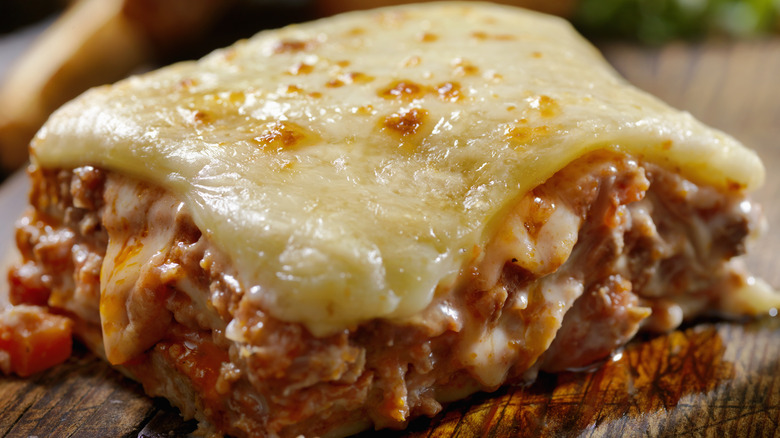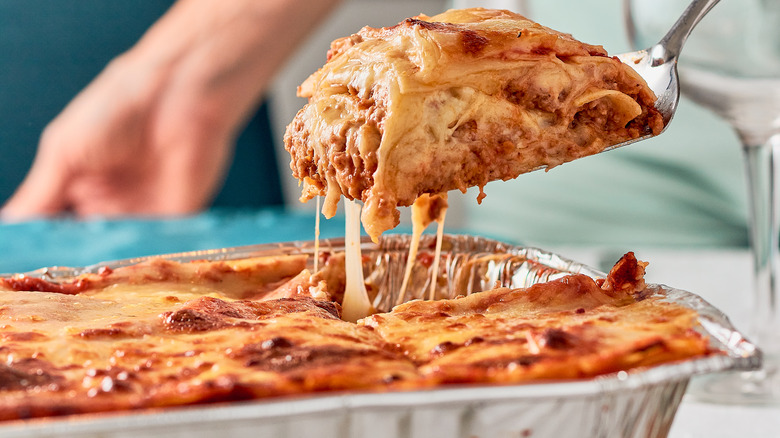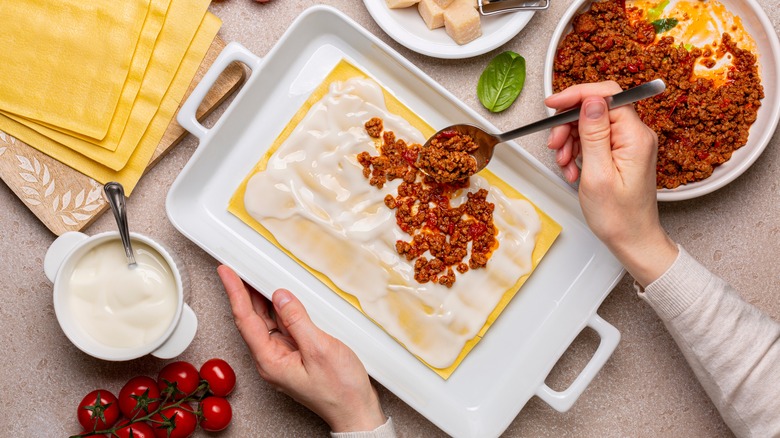A Drizzle Of Milk Will Help Stop Your Lasagna Corners From Getting Overly Burnt
Rich, tender, and undeniably savory, lasagna — the one-dish Italian casserole famed worldwide — is about as classic as it gets. With its generous layers of zesty sauce, ricotta and mozzarella cheeses, perfectly cooked al dente pasta noodles, vegetables and/or meats, and sometimes even a layer of smooth, creamy béchamel sauce, this labor-intensive entree has cemented its place as one of the most popular comfort meals for chefs and home cooks alike. Simply put, lasagna is exquisite.
However, among the troubleshooting issues home chefs often face with classic lasagna recipes, keeping the corners from getting too crispy is among the most challenging. But the good news is that there is a secret recipe addition that can help: milk. Yes, adding a drizzle of milk to the corners of your lasagna will keep them from crisping too quickly and burning, a tip that will have you preparing lasagna like a pro and able to satisfy even the most discerning of pasta lovers.
Adding milk to the corners of your lasagna
The key to avoiding the common lasagna pitfall of burnt, too-crispy edges is ensuring that you have enough liquid in the pan for the noodles to retain moisture while cooking. Lasagna noodles dry out quickly and easily. Therefore, it's important to saturate them with enough sauce and spread your filling all the way to the edges. This is exactly where adding a drizzle of milk comes in handy.
Simply drizzle some milk over the edges of the casserole before baking, and the extra liquid — up to ½ cup will suffice in most situations — will prevent the edges of your lasagna from getting dry, resulting in an evenly cooked dish that you can consume in full without worrying about that unpleasant, burnt-edge crunch. If you don't have any milk on hand, you can indeed use water — but it's important to note that this may slightly dilute your sauce, so milk is preferred.
As an added measure of moisture retention, consider covering your lasagna pan loosely with foil to keep the entire top layer from crisping too much. And if you're using no-boil noodles, which are more absorbent than regular noodles, you can add additional water directly to the sauce. But if you go that route, there's no need to add additional liquid to the edges — you don't want your lasagna to get soupy.
Other foolproof lasagna tips
Making great lasagna starts with choosing the right pan. Baking your casserole in a glass pan, as opposed to a metal pan, is recommended, as glass dishes stay warmer for longer, making them ideal for casseroles that need to rest before being served. Additionally, metal pans can sometimes leave a bitter, unpleasant taste when acidic foods, such as tomatoes, are cooked in them, while glass allows the casserole to retain its intended flavor. Also, ensure your pan is at least three inches deep, so that your lasagna stays contained and doesn't spill over while baking.
You'll want to start with a layer of sauce on the bottom of your pan to prevent your bottom layer of noodles from sticking. Be mindful of how much filling you put between your layers, and the size of your pieces of filling — thinly sliced and creamy (but not too watery) fillings are ideal, as they lend themselves well to easily cut slices. If you're adding ground meat, be sure to brown your meat beforehand, ensuring it's cooked thoroughly.
And when all is said and eaten, you can reheat your leftover lasagna and enjoy it again. Everyone knows lasagna tastes better the next day, anyway.


